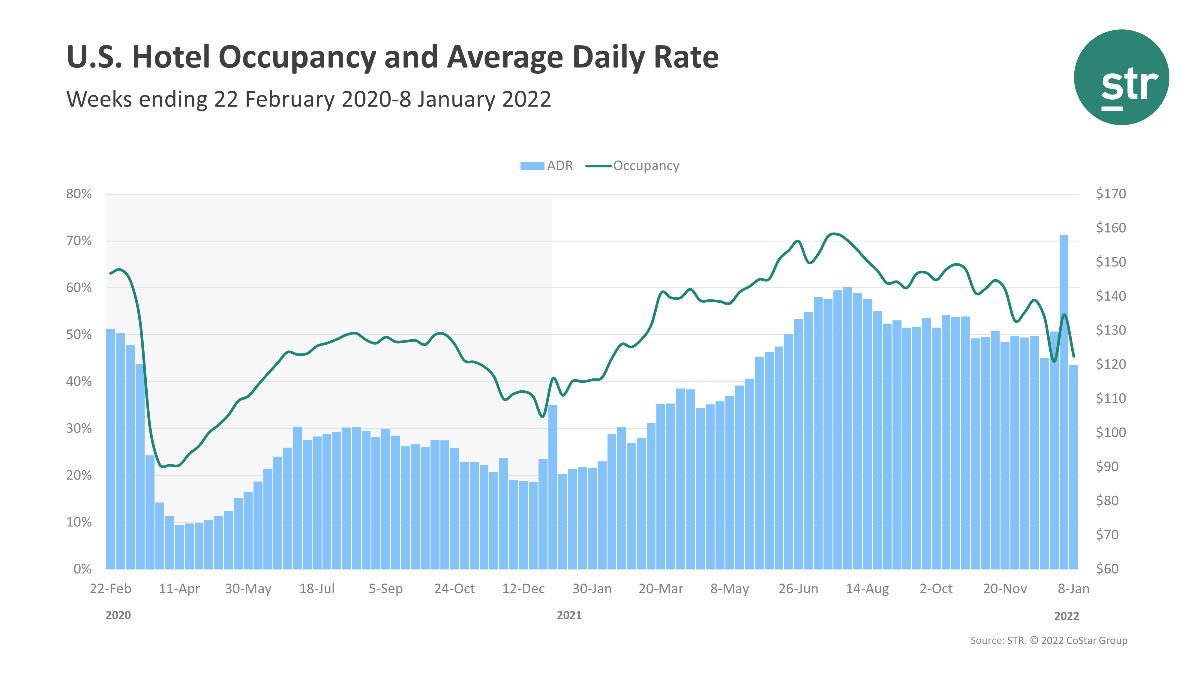
AS THE HOLIDAY season dwindles into the past, so did U.S. hotel performance, according to STR. Occupancy dropped, dragging ADR and RevPAR with it.
Occupancy was 45.4 percent for the week ending Jan. 8, down from 54.3 percent the week before and down 14.9 percent from the comparable week in 2019. ADR was $119.92 for the week, down from $157.91 week over week and a 4.8 percent drop from 2019. RevPAR reached $54.47, a decline from $85.74 the prior week and down 19 percent from 2019.
“Occupancy fell week over week because of a slowdown in leisure demand and a continued absence of business travel due to a Saturday holiday,” STR said. “While ADR also dropped from an all-time high the previous week, the metric came in at roughly 95 percent of the 2019 comparable.”
Occupancy did not increase over 2019 levels for any of STR’s top 25 markets, but Dallas came closest, falling shy by 6.6 percent with 55.1 percent.
San Francisco/San Mateo, California, experienced the largest occupancy decrease from 2019 with a 52.9 percent decline to 36.8 percent.
“The steep drop was due to the market hosting the College Football Playoff National Championship during the corresponding week in 2019,” STR said.
Miami saw the largest ADR increase, a 26.1 percent rise to $269.73 while the steepest RevPAR deficits were in San Francisco/San Mateo, down 87 percent to $52.23, and Atlanta, dropping 45 percent to $47.80.




